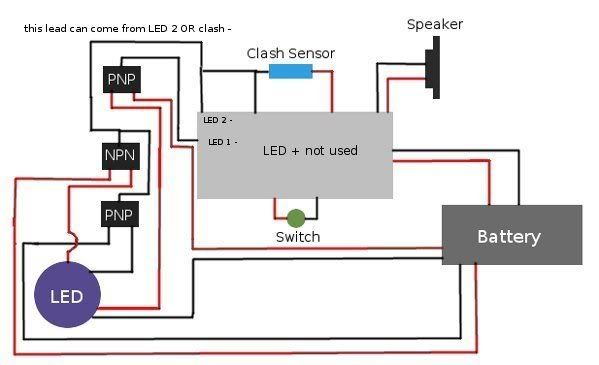ari-jaq, thanks for the post, but you are suddenly talking calculus while we are still trying to wrap our heads around trigonometry. I have absolutely no idea what your solutions are supposed to be doing or how we are supposed to implement them into an actual clash-on-flash saber that uses a 2010 Hasbro Electronic Lightsaber board and (possibly) a TCSS LED driver.
To break it down to its basics:
1) One (or more?) of the LED leads in the Hasbro board is normally on, and turns off on clash. Cannibal is using a relay to reverse this, so that the LED gets power only on clash.
2) With his current set-up, the LED chip used for clash effects is not getting enough current, and is too dim.
It just occurred to me this morning (It's morning in Japan) that I don't see how the transistor-as-switch solution could allow us to achieve the first problem of reversing normally off to normally on.





 Reply With Quote
Reply With Quote








Bookmarks